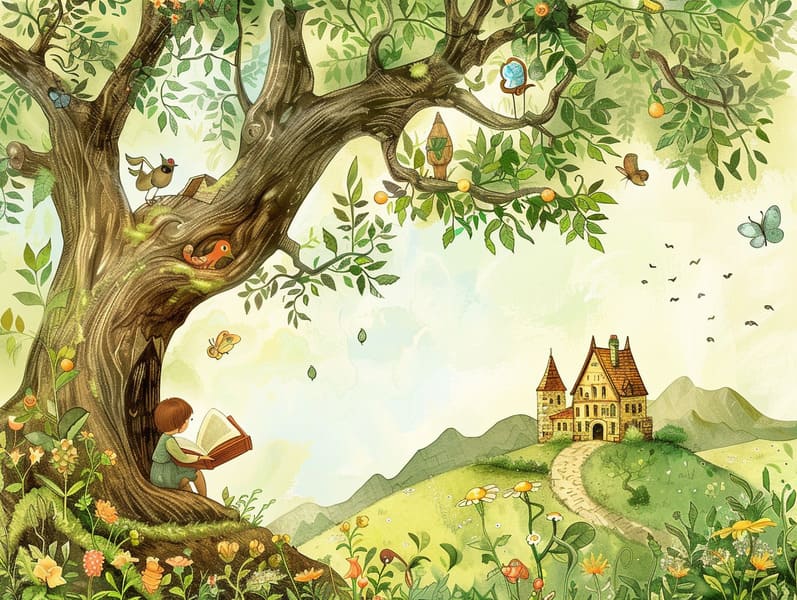
Legendary fairy tales have timeless appeal. These stories have been transmitted from one generation to the next far before they were ever transcribed. They were born from a variety of societies, including Eastern traditions. They were initially shared among older generations, often carrying themes and messages pertaining to the societal norms and beliefs of the time.
The renowned Brothers Grimm, Jacob and Wilhelm, were among the first to collect many of these beloved stories. Their compilation, "Grimm's Folk Tales," included narratives like "Cinderella," "The Bread Crumb Trail," and "Snow White," which have since become classics in the world of children's fairy tales. Similarly, Hans Andersen's imaginative tales, such as "The Story of the Little Mermaid," and "The Duckling's Story," have captured hearts worldwide, ensuring their place in the pantheon of famous fairy tales.
Despite their historical roots, classic fairy tales remain as impactful as ever, especially as children's night stories. These fantastical tales are now available in different formats, including vividly illustrated books, charming animations, and digital fairy tales.
Their lasting presence can be traced to several magical reasons:
Important Morals: Traditional fairy tales often present important moral lessons. Fairy tales like "The Boy Who Cried Wolf" teach the benefit of truthfulness, while "The Tale of the Tortoise and the Hare" show the virtues of steadfastness and unassuming nature. These stories offer the young clear distinctions between moral and immoral, building their moral compass in a mild yet impactful way.
Empathy and Understanding: Fairy tales frequently include heroes facing obstacles and hardships, fostering kids to comprehend with their struggles and applaud their triumphs. For instance, "Beauty's Beast" emphasizes the necessity of valuing inner qualities to recognize the true essence of a character, cultivating insight and discernment.
Cultural Understanding: Many classic fairy tales are rich in the cultural contexts from which they developed. Discovering these stories can provide fascinating glimpses into different societies, advancing a sense of cultural appreciation and comprehension.
Creativity and Fantasy: The imaginative elements in ancient fairy tales—magic wands—kindle children’s imaginative ideas. These tales transport readers to magical realms, promoting innovative thinking and a sense of delight that persists a lifetime.
Old fairy tales are not only bewitching but also educational. They serve as captivating tools in fostering various mental and emotional abilities in children. When ancient fairy tales are recited, they foster speaking abilities by bringing new terms and elaborate sentence structures. This practice also advances hearing abilities and attention span, as the young pay close attention, prepared to see what happens next.
Furthermore, talking about the themes and characters of fairy tales can strengthen cognitive skills and critical thinking. Kids are educated to discover patterns, expect results, and catch on to cause and effect. These explorations also contribute to kids communicate their thoughts and feelings, strengthening their emotional intelligence.
In today’s digital era, the availability of digital fairy tales has made these tales more acquirable than ever. Online resources and mobile apps feature extensive collections of classic fairy tales that can be looked at or played anytime, anywhere. Fairy tales read aloud are particularly favored, featuring an interactive method for the young to be a part of these whimsical stories. Read-aloud books and spoken videos transport characters and settings to life, often enhanced by entrancing soundtracks and instrumentals that amplify the narrative experience.
The persistent attraction of old fairy tales lies in their ability to adjust to modern times while staying true to their key morals. Contemporary versions of these tales often integrate more varied figures and modern settings, making them understandable to today’s audience. However, the underlying themes of daring, benevolence, and rightness remain unchanged, continuing to influence audiences of all ages.
Ancient fairy tales also offer a sense of familiarity and understanding. They allow a orderly narrative with a clear beginning, middle, and end, often finishing with the closure of conflicts and the triumph of morality over immorality. This certainty can be relieving for little ones, this site extending a sense of solidity in an unstable world.
Old fairy tales continue to spellbind and edify new generations, maintaining their fascination and relevance in modern society. As nighttime stories for kids, they make accessible a perfect blend of captivation and insight, nourishing moral values, empathy, and creativity. The proliferation of free fairy tales online and the well-received status of fairy tales narrated confirm that these old fairy tales remain reachable to new generations.
By conserving and recounting these tales, we continue to pay tribute to the rich tapestry of lore and cultural heritage. Whether you are viewing a vividly illustrated book, accessing a web-based library, or listening on an read-aloud book, the wonder of children's fairy tales is always within reach. These tales show us of the endless magic of stories and its ability to draw us together across epochs and places.
Regardless if you are enjoying a vibrantly illustrated book, exploring a electronic library, or listening on an read-aloud book, the attraction of timeless fairy tales is always within reach.
These fairy tales emphasize of the enduring presence of tales and its ability to gather us across eras and regions, making a tie that fascinates and enlightens alike.
Comments on “The Birth of Popular Fairy Tales and Their Endless Fascination.”